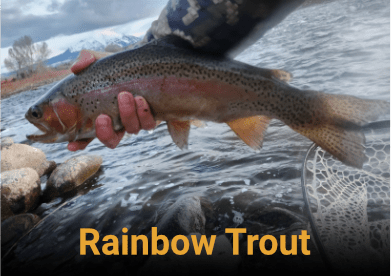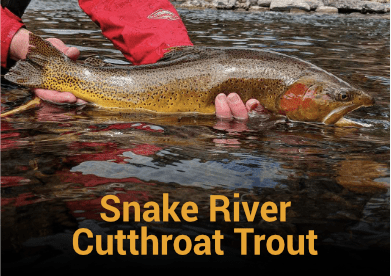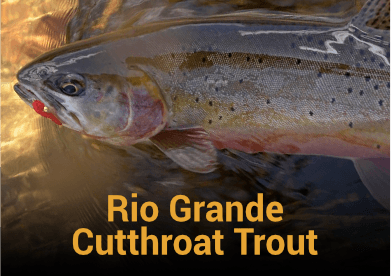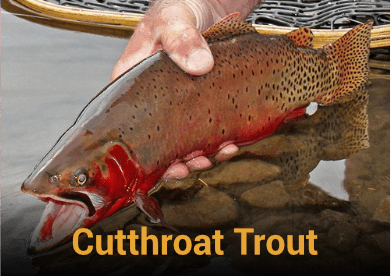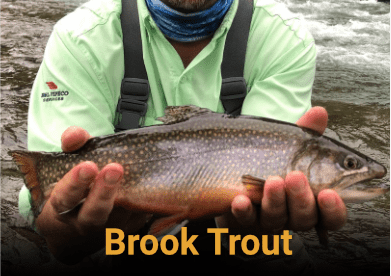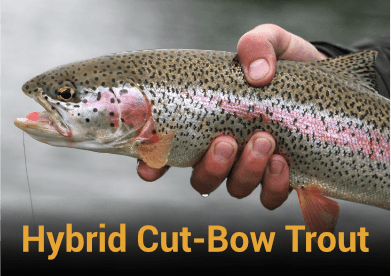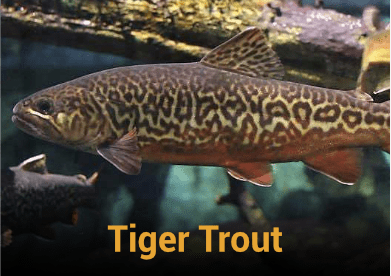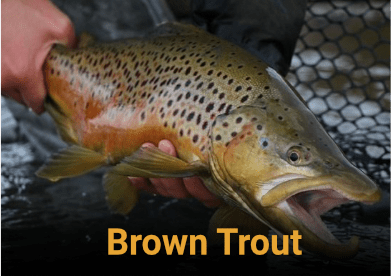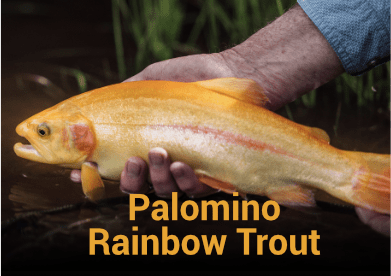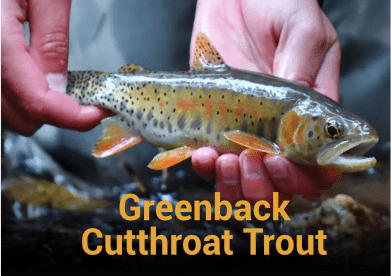Trout Identification
Trout Identification in Colorado: A Guide to Fly Fishing in Rivers, Streams, and Lakes
When it comes to fly-fishing in Colorado, the state's pristine rivers, streams, and lakes offer abundant opportunities for anglers to pursue trout. However, to make the most of your fishing experience, it's crucial to identify different trout species and understand their behaviors. In this comprehensive guide, we'll delve into trout identification in Colorado, exploring the various types of trout you're likely to encounter and equipping you with the knowledge you need to become a successful fly angler.
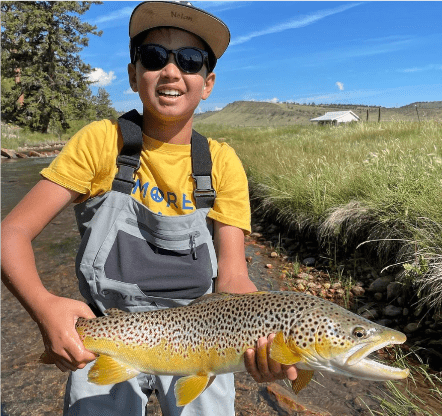
1. The Rainbow Trout: A Colorado Favorite
One of Colorado’s most iconic trout species is the Rainbow Trout (*Oncorhynchus mykiss*). Known for its vibrant colors and aggressive fighting behavior, the Rainbow Trout is a favorite among fly fishermen. Its distinct pink stripe along the side of its body and dark spots on a lighter background make it relatively easy to identify.
2. The Brown Trout: A Wily Challenger
Another prized trout species in Colorado is the Brown Trout (*Salmo trutta*). Brown Trout are known for their elusive nature and can provide a challenging angling experience. They possess a gold-to-brown coloration with a sprinkling of red and black spots and often have an adipose fin (a small, fleshy fin located between the dorsal and tail fin) which helps distinguish them from other trout species.
3. The Brook Trout: A Vibrant Visitor
Another trout species in Colorado is the Brook Trout (*Salvelinus fontinalis*). Renowned for their striking colors, including a deep red belly and marbled patterns on their back, Brook Trout are a sight to behold. They thrive in cold, clear mountain streams and can be particularly aggressive in feeding, making them an exciting target for fly anglers.
4. Cutthroat Trout: A Stunning Sight
Colorado is home to three native subspecies of Cutthroat Trout: the Colorado River Cutthroat (*Oncorhynchus clarkii pleuriticus*), the Greenback Cutthroat (*Oncorhynchus clarkii stomias*), and the Rio Grande Cutthroat (*Oncorhynchus clarkii virginalis*). Cutthroat Trout are known for the distinct red slash marks on their throats, which give them their name. Each subspecies has unique characteristics and preferred habitats, making them a fascinating target for anglers seeking adventure.
5. Tiger Trout: A Combination Of Two
A hybrid species created by crossing a female brown trout (*Salmo trutta*) with a male brook trout (*Salvelinus fontinalis*), tiger trout are an intriguing addition to Colorado's fishing scene. These fish display unique and eye-catching characteristics, making them a popular target for anglers. Tiger trout in Colorado typically exhibit a distinct pattern of dark stripes along their bodies, resembling the lines of a tiger, hence their name.
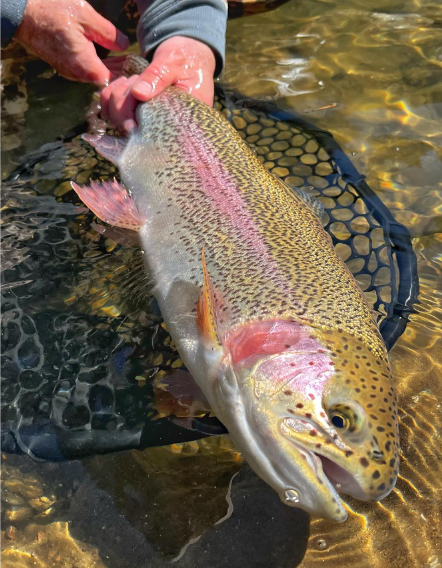
6. Palomino Trout: A Golden Trophy
Palomino Trout, or Golden Trout, are a unique and visually stunning trout subspecies. Their vibrant golden coloration and distinctive features make them a sought-after catch among anglers. Let's dive into the details of these beautiful fish: the Golden Trout (*Oncorhynchus mykiss aguabonita*) is native to high-elevation streams and lakes, this trout species requires pristine and well-oxygenated waters to thrive. Golden Trout are highly sought after by anglers due to their rarity and the stunning landscapes they inhibit.
7. Understanding Trout Behaviors
To effectively target trout in Colorado's waters, it's crucial to understand their behaviors. Trout are generally more active during low-light conditions, such as early mornings and evenings. They seek cover in deeper pools, under rocks, or along undercut banks to stay protected from predators. Understanding their feeding patterns, preferred habitats, and seasonal variations can significantly improve your chances of success.
8. Fly Selection for Colorado Trout
Choosing the right fly is paramount to enticing trout in Colorado. Different trout species have varying preferences for food sources, such as insects, small fish, or crustaceans. Matching the hatch (selecting a fly that imitates the prevalent insect species at a given time) is a common strategy employed by fly anglers. Additionally, experimenting with different fly patterns, sizes, and colors can help you determine what works best for each trout species.
Top Fly Fishing Destinations in Colorado
Colorado has numerous exceptional fly fishing destinations, each offering unique angling experiences. Some of the top fly fishing destinations in Colorado include:
- The Arkansas River: Known for its diverse trout population, including Rainbow, Brown, and Cutthroat Trout, the Arkansas River offers excellent fly fishing opportunities. Sections such as the renowned "Gold Medal Water" near Buena Vista are popular due to their abundance of large trout.
- The Gunnison River: The Gunnison River is famous for its trophy-sized Brown and Rainbow Trout. With its deep canyons and challenging rapids, the Gunnison River provides a thrilling fly fishing experience for anglers seeking a true adventure.
- The Roaring Fork River: Flowing through the picturesque Roaring Fork Valley, this river is home to a healthy Rainbow and Brown Trout population. Known for its scenic beauty and diverse fishing opportunities, the Roaring Fork River attracts anglers of all skill levels.
- The South Platte River: The South Platte River is a favorite among fly fishermen due to its proximity to Denver and exceptional trout population. The river boasts excellent hatches, making it an ideal spot for dry fly fishing and nymphing techniques.
- The Fryingpan River: Renowned for its exceptional fly fishing conditions, it is known for its abundance of large trout, notably Brown and Rainbow Trout. The river's unique tailwater habitat provides consistent water temperatures and year-round fishing opportunities.
- High Mountain Lakes: Colorado's high mountain lakes offer a serene and breathtaking fly fishing experience. These pristine lakes are home to various trout species, including Cutthroat and Brook Trout. Accessible by hiking or backpacking, these remote locations provide solitude and the chance to catch genuinely wild trout.

